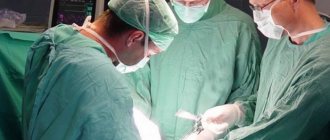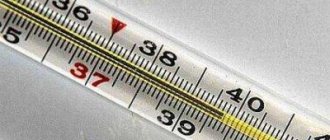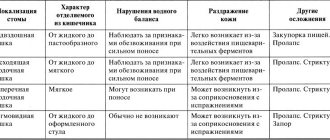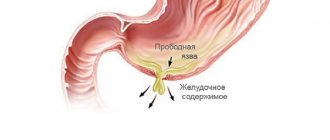The Milligan-Morgan operation is the gold standard in the treatment of severe forms of hemorrhoids. The technical rules for performing this operation were developed back in the 30s of the last century by two outstanding surgeons. But they remain relevant today. Over the past time, medical equipment has been improved, the technique has been modified several times, but the principle of the operation itself has been preserved and has proven its effectiveness. Recovery after hemorrhoidectomy takes a long time. A quick and successful result depends on the exact implementation of the recommendations.
Description and types of operation
Hemorrhoidectomy is a surgical procedure to remove hemorrhoids. During this operation, hemorrhoids and mucous membrane are removed.
The hemorrhoidectomy method was first used in 1935 by surgeons Milligan and Morgan. Surgery is especially effective for the radical treatment of hemorrhoids in severe patients. For many decades it has been successfully used in many countries around the world.
Over the years since the introduction of technology into medical practice, many attempts have been made to improve the Milligan-Morgan hemorrhoidectomy method. As a result, different types appeared. Actually, the goal of all varieties is the same, but the methods of implementation are different.
Open hemorrhoidectomy
During the operation, the wounds remaining at the site of the removed nodes are not sutured, but remain open. Over time, the tissues naturally heal and regenerate.
This intervention is performed under intravenous or epidural anesthesia and involves staying in the hospital after surgery for 1-1.5 weeks.
Closed hemorrhoidectomy
This intervention option was proposed in the 50s of the last century by surgeons Fergusson and Quinon. The technique of hemorrhoidectomy itself remains unchanged in principle, however, after the operation the edges of the wound are sutured. The purpose of such manipulation is to facilitate the postoperative recovery period.
Hemorrhoidectomy is a surgical procedure to remove hemorrhoids.
With closed hemorrhoidectomy, local anesthesia is sufficient, so the patient is conscious during the operation.
Submucosal hemorrhoidectomy
This operation is also called the Parkes method. In terms of implementation, this is perhaps one of the most difficult techniques for removing hemorrhoids. Its essence boils down to the fact that only the node is removed, while the mucous membrane is preserved. However, the complex technique of performing it more than pays off with an easier rehabilitation period, during which the patient does not feel severe pain, and the act of defecation is much easier.
This intervention is performed under general anesthesia and requires constant monitoring of the patient.
Regardless of the method of hemorrhoidectomy, the result of the operation is the same - removal of nodes, and, consequently, elimination of all symptoms of hemorrhoids.
According to statistics, relapses after such an intervention are extremely rare: in 15-30% of patients 10-12 years after treatment. With proper nutrition and lifestyle, you can forget about the disease forever.
The essence of submucosal hemorrhoidectomy is that only the node is removed, while the mucous membrane is preserved.
Complete rehabilitation
Having completed the early postoperative period, the patient enters a long-term rehabilitation phase. It lasts from 3 to 5 weeks, then the person returns to normal life and goes to work. At the same time, significant restrictions remain, which must be adhered to until the end of life in order to avoid relapse of the disease and long-term consequences.
Objectives of the rehabilitation period:
- restore peristalsis and intestinal microflora, achieve normal natural stool;
- ensure rapid healing of the wound without infection and suture dehiscence;
- prevention of bleeding, strictures, decreased muscle tone of the anal ring.
Careful hygiene must be observed:
- wash with chamomile infusion or potassium permanganate solution after bowel movements;
- use antibacterial wipes instead of toilet paper;
- at night and in the morning use aseptic ointment - Levomekol, Methyluracil, Ichthyol.
Medicines after surgery
Treatment after hemorrhoidectomy includes the use of probiotics, venotonics, laxatives, antibiotics, and vitamin-mineral complexes.
Pharmacological agents for treatment:
- probiotics to restore microflora and intestinal function - Probifor, Normolakt, Linex, Florin Forte, Eubicor;
- laxatives - syrups with lactulose Lactitol, Exportal, Portalac;
- venotonics – Phlebodia 600, Detralex, Venarus, Vasoket;
- antibiotics are used in the form of injections, suppositories, tablets - Gentamicin, Levomycetin, Chloramphenicol, Amoxicillin;
- healing agents for mucosal regeneration - suppositories with methyluracil, ichthyol, sea buckthorn oil, aloe juice;
- replenishment of the lack of vitamins and minerals with the preparations Ascorutin, Aevit, Vitrum.
Medicines are prescribed by the attending physician according to individual indications. The goal of drug therapy is to restore body functions after surgery with minimal losses.
Nutrition after surgery
An indispensable condition for successful recovery is diet after hemorrhoidectomy. The menu is selected with the intention of reducing the mechanical, thermal, and chemical effects on the gastrointestinal tract. Nutrition provides proteins, fiber, fats, carbohydrates, vitamins, and mineral salts.
Basic diet rules:
- 5 meals a day in reasonable portions;
- food and drink temperature 25-55°C;
- mashed, boiled, steamed, baked dishes;
- foods rich in easily digestible protein - lean meat, fish, eggs, milk;
- boiled pureed vegetables - zucchini, carrots, pumpkin, potatoes;
- fruits, berries - apples, strawberries, watermelon and melon in moderation, some apricots;
- stale dried white bread;
- drinks – water, herbal tea, compote;
- exclusion of fried, fatty, spicy, salty, smoked, pickled;
- restriction of sweets, flour, butter;
- quitting smoking, alcohol, carbonated drinks.
A rational diet will restore intestinal function, prevent constipation, and speed up healing due to the full supply of nutrients.
Physical exercise
After surgery, with the approval of the proctologist, adequate physical exercise is necessary. Heavy lifting and prolonged exercise are strictly contraindicated. After 2-3 weeks, they begin walking at a leisurely pace of 1 km per day, gradually increasing the distance. Special therapeutic exercises in a lying position will strengthen the pelvic muscles. It should be noted that baths, saunas, and hot baths are prohibited for several months after surgery.
Hemorrhoidectomy is indicated for prolapsed painful nodes at stages 3-4 of the disease. The operating technique is selected individually. The postoperative period is fraught with complications if the doctor’s advice is ignored.
We recommend: What does rehabilitation consist of after surgery to remove hemorrhoids?
Late postoperative period
Rehabilitation after surgical excision of hemorrhoids does not depend on the method of intervention and the type of suture material. Includes following a diet, avoiding constipation, limiting physical activity, and treating the surgical field.
Nutrition after discharge from the hospital continues according to the same principles as in the early postoperative period:
- The main goal is to achieve easy bowel movements that do not cause pain. The method of heat treatment of products plays an important role. For a patient after hemorrhoidectomy, boiled lean meat, vegetable protein with a lot of fiber, and boiled or steamed fish are recommended. Raw vegetables and fruits, fermented milk products (except cottage cheese), whole grain pasta and cereals. Consumption of light carbohydrate foods, as well as fried, spicy and very hot foods is prohibited.
- The patient's drinking regime should be plentiful. Method for calculating fluid intake: 30 ml per kilogram of body weight. The water balance should be replenished with clean water and herbal teas (preferably with a mild laxative effect). Coffee and tea should be consumed in limited quantities; they absorb water and contribute to the development of edema. Carbonated drinks and alcohol are contraindicated.
The patient's drinking regime should be plentiful.
If diuresis is not restored, fluid intake is limited. In case of prolonged (more than 3 days) urinary dysfunction, you should consult a doctor. Recovery after surgery in elderly and senile patients is slower than in young ones.
Pain after surgery bothers the patient with any method of invasive treatment. To relieve pain, non-steroidal analgesics are used, which also have anti-inflammatory and antipyretic effects. Ointments and creams with anesthetic are applied locally.
Healing after the open method is longer and depends on the regenerative abilities of the body. In the absence of complications, it lasts 4–5 weeks, with the closed method – up to a month. To stimulate reserve cells and activate fibroblasts, use Solcoseryl ointment, and prescribe sitz baths with medicinal herbs (nettle, chamomile, knotweed). If you carefully follow the specialist’s recommendations in the postoperative period, the wound will heal without early and long-term complications.
How to avoid relapse?
Despite the fact that this surgical intervention completely eliminates the problem, the patient must still take measures to avoid relapse. Important rules:
- increased drinking regime;
- strict adherence to dietary recommendations;
- taking laxatives and dietary fiber as prescribed by your doctor if you are prone to constipation;
- the urge to defecate cannot be ignored;
- maintaining a healthy weight;
- moderate physical activity.
In conclusion, it is worth adding that most often the operation in question is prescribed if hemorrhoids are very advanced. Therefore, you should not wait until the situation worsens so much that other than radical measures there are no other ways to combat the disease.
Indications and contraindications for surgery
Open hemorrhoidectomy is indicated in the following cases:
- if a diagnosis of hemorrhoids is established in the fourth stage. This is an already advanced disease that requires immediate surgical intervention. Such situations often arise against the backdrop of shyness of patients who are simply embarrassed about their problem, and therefore do not visit the doctor for a long time, in fact until the end. Advanced stages of hemorrhoids are characterized by the development of terminal processes, when inflamed hemorrhoids do not simply fall out, but begin to die. It is important to understand that the lack of treatment in this case can lead to death;
- if the presence of combined hemorrhoids is noted. It is known that it is extremely difficult to respond to conservative, that is, drug treatment. The absence of any positive results from classical therapy requires the use of minimally invasive methods. If they do not help, then excision of hemorrhoids according to the Milligan-Morgan method is prescribed;
- there is severe bleeding, which threatens the patient with significant blood loss and, as a consequence, the development of anemia. In this case, the stage of the disease does not play any role. Bleeding can be caused by various factors, including mechanical ones, when the patient does not comply with precautions and regularly damages the inflamed cavernous vascular bodies saturated with blood;
- if minimally invasive treatment methods did not give the expected result, or even provoked the development of complications.
In fact, hemorrhoidectomy can be prescribed at any stage of hemorrhoids, except for the initial stage, that is, the first. For example, at the second stage of development, the nodes can be very large, which not only causes significant inconvenience to the patient, but also provokes constant constipation, bleeding and excruciating pain. At the third stage, there is a regular loss of cones that need to be constantly adjusted. Dropped nodes can also be pinched - this is a very dangerous pathology that requires immediate treatment.
It is noteworthy that it is not recommended to operate on people under the age of 35, except in particularly severe cases. The fact is that a young body will hinder the long-term effect of surgery, which significantly increases the risk of relapse. This is why hemorrhoidectomy is usually prescribed to people over forty years of age.
There are other contraindications besides age. First of all, this is the presence of various intestinal diseases, in particular those that are accompanied by a pronounced inflammatory process, problems with the human immune system, as well as changes in an oncological nature. The same applies to elderly people who, moreover, have severe pathologies of the cardiovascular system.
Open hemorrhoidectomy surgery is quite traumatic. Therefore, after surgery, the patient can expect a long recovery. Wound healing occurs in a place where bacterial infection is constantly present. Accordingly, a weak immune system will be unable to cope with it, which can lead to dangerous complications such as paraproctitis or purulent fistula.
Unconditional contraindications make hemorrhoidectomy impossible.
Treatment in this case is carried out using a combination of drug therapy and modern minimally invasive procedures.
Contraindications
Like any other operation, the method of surgical removal of hemorrhoids has several contraindications:
- severe cardiovascular failure, acute and chronic;
- decompensated liver and kidney diseases;
- malignant processes of any localization, including leukemia;
- acute or severe chronic infectious diseases;
- diabetes mellitus type I or II, complicated by renal failure;
- organic lesions of the brain substance;
- epilepsy;
- pregnancy.
After surgical removal of hemorrhoids, tamponing of the anal canal is not performed. The first days of the postoperative period occur with such consequences as pain after surgical removal of nodes, bleeding, especially if the wound is not sutured. Short-term urinary retention may develop. In such cases, patients are reduced in drinking regime and prescribed painkillers.
Surgery should not be performed during pregnancy
Types of hemorrhoidectomy
Depending on the surgical technique, there are 5 types of hemorrhoidectomy:
- open;
- closed;
- stapler (Longo method);
- Parkes method;
- Internal piping (Subbotin method).
In the sections below we will talk about each of the operations separately.
Open
The classic hemorrhoidectomy is the Morgan-Milligan method.
During the application of this technique, it has undergone changes. The essence of open hemorrhoidectomy according to Morgan-Milligan is to use it to remove not only external but internal nodes.
The peculiarity of the operation is the complete excision of the nodes and removal of it along with the mucous membrane.
The nodes remain open after the operation, and after this their natural healing occurs.
The method is traumatic, so the operation is performed under general anesthesia in a hospital setting. You can learn more about the operation using the Morgan-Milligan method by watching the video below:
https://youtube.com/watch?v=XJJ7EKfn9zg%3Ffeature%3Doembed
Closed
The author of the technique is the American doctor Ferguson.
The operation is a modification of classic hemorrhoidectomy. A retractor is used to expose the tissue, which is then removed from the anus. After excision of the nodes, the wounds are sutured with self-absorbable threads
It is important to follow a diet after hemorrhoidectomy to avoid complications and relapses.
Stapling (Longo method)
The method was developed in the 90s of the last century. Unlike the classical operation, in this case the rectal mucosa and the vessels carrying blood to the nodes are intersected.
In Russia, operations using this technique began to be used only 5 years ago. Hemorrhoids protruding from the anus are clamped with a special stapler, and excess sections of the mucous membrane are cut off.
Anal skin prolapse is reduced by inserting a dilator. An anoscope is inserted through it to control the application of the purse-string suture.
Using an anoscope, the prolapsed mucous tissue is pushed into the anus. The anoscope rotates 270 degrees and a suture is placed along its course.
Doctor's opinion
Alexander Petrov, surgeon: “Hemorrhoids are a chronic disease that affects many people on the planet. When conservative treatment methods do not allow the doctor to hope for a positive outcome, then surgery remains the only way to solve the problem. Surgical treatment of hemorrhoids is represented by different surgical methods. The main objective of such methods is the excision of tricky bodies located in the submucosal layer. The most popular, according to proctologists, is the Milligan-Morgan hemorrhoidectomy. The operation involves excision of hemorrhoids, suturing and removal of cavernous bodies of the submucosal layer of the rectum.
Classic hemorrhoidectomy has one drawback. After removal of the nodes, wounds form on the wall of the anal canal, which can bleed and cause pain. In addition, superficial wounds can become infected, which can lead to serious complications. In this regard, many surgeons, after excision of internal and external hemorrhoids, perform partial suturing of the edges of the wounds, and their secondary tension is performed.”
In many cases, the Milligan-Morgan operation is the only available option for getting rid of hemorrhoids. A thorough preliminary examination, preparation and the right attitude help to tolerate this operation well. Allows you to safely survive the rehabilitation period and continue an active lifestyle.
THERE ARE CONTRAINDICATIONS CONSULTATION WITH YOUR DOCTOR IS REQUIRED
Author of the article Alexey Alexandrovich Egorov, proctologist
- Zueva Natalya
This is my fourth pregnancy. After the third birth - 3 weeks later, while breastfeeding the baby - I experienced all the “charm” of hemorrhoids. It was impossible to undergo any treatment; for 3 weeks my husband and child went to a day hospital (it was good summer) for IVs, injections, a laser, I took pills that, on the one hand, would somehow help, but on the other hand would not harm the child. Throughout my fourth pregnancy, I was afraid of repeating the “breastfeeding with hemorrhoids” scenario, so as soon as hemorrhoids appeared, it was at 7 months. (despite all the precautions taken - not using toilet paper, regular bowel movements, proper nutrition, exercise and not gaining excess weight) At 7 months I had surgery to remove this section of the vein (in fact, it already looked like an octopus tentacle - She, of course, could not perform any function). 3 weeks after that it was just some kind of hell - there was constant pain, I was afraid to eat, walk, sit, poop - you just feel like a complete invalid. Very important at this moment! I ate oatmeal with water, boiled beets, fresh carrot salads, broth, vinaigrette. Regularly in the morning, I sprayed AO with lidocaine, lubricated it with any greasy ointment, did an enema, when the darkness in the eyes from defecation passed, washed everything with miramistin and smeared it with agrosulfate. She remained alive, everything healed. 2 weeks before giving birth - a crack appeared, healed it. Now I feel 2 nodes swollen. Options for childbirth: do it by cesarean section or then again have surgery to remove it? and which is better? both here and there - pain, risk, recovery period...(
- Julia
Natalya, even surgical operations have now been improved. But better in terms of recovery is laser removal of hemorrhoids. If the nodes are small, perhaps even injections (sclerotherapy) Go to a good proctologist.
- Tatiana
I had a hemorrhoidectomy two weeks ago. I follow my diet, use rectal suppositories and ointment all the time. How long will it take for full recovery and recovery? It still hurts to go to the restroom, how long will this pain me? It may liquefy the stool.
- Irina Anatolyevna
Tatyana, all sensations will pass, the stool should be of medium hardness, you don’t need to do anything! Complete healing after surgery takes up to 50 days.
Write your opinion
Open hemorrhoidectomy
Removal of inflamed varicose veins using a radical method has been carried out for almost 100 years. The use of Milligan-Morgan hemorrhoidectomy is widely used by surgeons all over the world. The advantage of this method is that during the intervention process you get rid of not only external, but also internal varicose veins (any type of hemorrhoids, including combined, is treated). Over time, the technique has been improved many times. Several modifications of the operation have appeared:
- open - author's version;
- closed (Heaton and Ferguson method);
- submucosal nodeectomy (Parks method).
The classic (open) treatment option by E.Milligan and C.Morgan (the authors of the method) was carried out without suturing the operated area. The difference with other types of surgical intervention is that it is simple: no stitches are required. After removing the varicose vein, the wound remains open. It is believed that this is necessary for its gradual healing in a natural way.
The operation is performed in a hospital setting under general anesthesia. For this purpose, parenteral administration of drugs is used. The problem is the lengthening of the period of stay in a hospital bed - during the first day the patient is in intensive care. The period depends on the severity of the pain symptom and the possibility of its relief; it can be 3-5 days. Complications often develop after hemorrhoidectomy in the form of bleeding of varying severity.
Indications for this operation for hemorrhoids
In modern coloproctology there is a large arsenal of medications for the conservative treatment of the disease at different stages of its development. This applies to a greater extent to external units. Radical treatment is used in severe cases when therapy and other methods have not given a positive result.
The main indications for surgery are:
- prolapse of hemorrhoidal cones with every slight physical activity, including during bowel movements and urination;
- ineffective hand reduction;
- large areas of necrosis, non-healing cracks with bacterial infection;
- significant loss of ability to work due to severe pain symptoms.
This occurs in advanced cases of internal and combined hemorrhoids, when surgical treatment is the only method of relieving the patient of suffering.
Hemorrhoidectomy is also performed in the following cases:
- sharp progression of pathology, when the usual quality of life decreases;
- large size nodes (stage 3-4 of the disease), if it is impossible to get rid of them by other known methods;
- lack of effect from the use of minimally invasive treatment methods;
- frequent exacerbations with loss of internal nodes and development of inflammation;
- massive bleeding, threatening the development of anemia;
- high risk of thrombosis when prolapsed cones are pinched;
- thrombosis of anorectal vessels;
- combined type of hemorrhoids.
These are direct indications for surgical treatment. The timeliness of seeing a doctor determines how long it will take to treat hemorrhoids and how long it will take for them to heal after surgery. It has been established that, in addition to the acute pathology that inflamed varicose nodes lead to, in 79% of cases there is a distant degeneration into a malignant neoplasm.
Constant bleeding, even in small amounts (traces of blood on linen or toilet paper after bowel movements) over time quietly leads to severe anemia. The condition worsens gradually:
- weakness and lethargy increases;
- performance decreases;
- dizziness, palpitations and shortness of breath appear even with minor physical activity and walking.
The patient may not be aware of the cause of this deterioration in health until he takes a general blood test. Sometimes anemia becomes severe and the patient is admitted to the hospital.
The large size of varicose veins prevents bowel movement. The loss of internal hemorrhoids leads to purulent complications of the disease due to the addition of an infection caused by pathogenic microflora.
The mucus that is released when the nodes prolapse irritates the skin around the anus, causing itching and pain. With a chronic course, the pain symptom becomes pronounced. Suppositories and ointments may be ineffective.
Alternative to hemorrhoidectomy
In addition to radical surgery, which is hemorrhoidectomy, there are a number of low-traumatic methods for getting rid of rectal varicose veins. Their use is intended for the early stages of the disease. But some of them are successfully used in the third and fourth degrees:
- infrared coagulation;
- ligation;
- sclerotherapy;
- transanal disarterization;
- removal using the Surgitron device.
Among the surgical methods of treatment, in addition to the open classical method according to Milligan-Morgan, the following are successfully used:
- radical treatment with the closed method of Heaton and Ferguson;
- submucosal ectomy—Parks operation.
Closed hemorrhoidectomy according to Ferguson
Closed removal of inflamed nodes is a modification of the classic open operation. It is distinguished by close suturing of the wound edges after removal of hemorrhoidal cones, which significantly shortens the rehabilitation period. Performed when there are no visible boundaries between external and internal nodes. Drainage is not installed after surgery.
There are negative sides:
- with a closed wound, more pronounced scarring occurs, which can lead to rectal stenosis;
- high risk of blood accumulation behind the sutures, in addition to hematoma, this can significantly delay wound healing;
- in rare cases, fecal incontinence develops;
- relapse rate is 20%.
Submucosal hemorrhoidectomy
Submucosal removal of hemorrhoids was developed in 1956. The Parkes method involves preserving the mucous membrane. The operation is technically complex: the excision area expands. Removal is carried out not along the leg of the node, as in previous options, but along the surrounding tissues. The surrounding part of the submucosal layer is captured. Once completed, the wound is sutured.
This technique is favorable for the patient. The recovery period is short (up to 2 weeks) and passes easily. There are no cases of urinary disturbances, pain symptoms are not expressed. It is performed under general anesthesia and requires careful monitoring of the patient. In rare cases, scars and abscesses form.
How to prepare for hemorrhoidectomy
Hemorrhoidectomy is not an abdominal operation: it does not open the abdominal cavity. But there is a violation of the integrity of the skin and intestinal mucosa, as well as muscle fibers - a full-fledged surgical intervention is performed. In addition, the operation is performed under anesthesia, which requires particularly careful preparation. Proctologists believe that proper preparation is more than 50% of the successful result after surgery.
A pre-procedure examination is necessary in order to prepare and identify contraindications for surgical treatment. It is necessary to exclude a number of diseases. Pathology for which surgical interventions are not performed:
- acute colitis of varying etiology and severity;
- malignant neoplasms in the body;
- decompensated heart or pulmonary failure;
- liver and kidney failure;
- acute infections;
- blood clotting disorder;
- sharply reduced immunity, AIDS.
Contraindications for this type of treatment are;
- severe general or agonal condition;
- pregnancy and lactation;
- age up to 40 years;
- in elderly and elderly people (the question of the possibility of performing an operation is decided individually, taking into account the general well-being of the patient).
When prescribing surgical treatment, there is an age barrier: under 40 years of age, surgery is not recommended due to subsequent relapses.
Nuances of the operation
Proctologists prescribe hemorrhoidectomy in advanced forms of pathology: IV, III and II degrees (with the formation of large nodes). But before performing the operation, doctors take into account the following factors:
- Age. Surgical intervention is recommended for patients aged 35-40 years. At a younger age, hemorrhoidectomy does not guarantee a long-term effect, and the risk of relapse is high.
- Existing diseases. The operation is contraindicated for people diagnosed with inflammatory bowel diseases, immunodeficiency conditions, Crohn's disease, oncology, AIDS.
Relative contraindications for hemorrhoidectomy include pregnancy and inflammation in the anus. They appear in case of discharge from the anus. To carry out the operation, anti-inflammatory therapy is first carried out.
Preparation for the procedure
Hemorrhoidectomy is not a abdominal procedure. But preoperative preparation for hemorrhoidectomy is an important step towards rapid subsequent recovery. What it includes:
Analyzes. Before preparing the patient for surgery, he will have to undergo a number of tests:
- urine;
- blood (biochemical and general);
- blood for RW (detection of syphilis), HIV and hepatitis;
- for a coagulogram (determining the level of blood clotting).
According to indications, an ultrasound of the peritoneal organs is performed. The patient must undergo anoscopy and digital examination of the rectum. Sometimes sigmoidoscopy (examination of the lower intestinal region) is also prescribed.
Diet. The preoperative diet is very important for the operation, because it plays a decisive role in the success of the recovery period. Before hemorrhoidectomy, the patient should avoid foods that cause flatulence and excessive formation of feces. This:
- mushrooms;
- chocolate;
- legumes;
- beer and kvass;
- black bread;
- milk (fresh);
- sauerkraut;
- tomatoes, sorrel, onions;
- Exotic fruits;
- carbonated drinks;
- beef and lamb meat;
- pears, grapes, apples, gooseberries.
Preference in the menu is given to white bread, fermented milk products, and eggs. It is recommended to drink more fluid.
On the eve of the operation. On day X, the patient undergoes a cleansing enema. This procedure can be replaced by taking special products that deeply cleanse the intestines (Lavacol, Fortrans, Duphalac, Bisacodyl, Guttalax).
Complications
In some aggravating circumstances, complications may develop after hemorrhoidectomy. To prevent these conditions, proper preparation in the preoperative period is very important. The most common complications are:
- Bleeding. Observed in most cases. As a rule, its intensity is low, so it can be eliminated with the help of adrenaline, and in the postoperative period, hemostatic drugs (aminocaproic acid, tranexam, dicinone, etc.) are used.
- After surgery, many patients experience impaired stool passage. Postoperative constipation is quite common and is mainly associated with the patient's fear of defecation.
- Urinary retention. It develops mainly in men. To restore the outflow, catheterization of the bladder is used.
- When excessively dense stool forms, an anal fissure may appear in the area of the healing wound. Treatment options include nitroglycerin ointment or surgical excision.
- The formation of a fistula occurs several months after surgery. The cause of this complication is the capture and excision of muscle tissue when isolating the hemorrhoid. As a result, a direct passage is formed from the anus to neighboring structures.
- Reducing the lumen of the anus. This complication is caused by pathological proliferation of connective tissue. Clinically it will be manifested by a violation of the passage of feces. To eliminate the defect, the anus is dilated.
- In some cases, blood can accumulate under the mucous tissue, forming a hematoma.
- If the musculo-ligamentous apparatus of the rectum is damaged, fecal and/or urinary incontinence occurs.
- If the rules of asepsis and antisepsis are not followed, as well as if the patient has an immunodeficiency, there is a high probability of infection of the surgical wound. Therapeutic tactics are selected individually depending on the characteristics of the course of the infectious process.
Surgical removal of hemorrhoids
Hemorrhoids occur as a result of the formation of blood clots in the venous vessels. They turn into nodes that are easily injured, causing pain and bleeding.
Surgery is considered the most extreme method of treatment. Most often, patients are prescribed a special diet, ointments or suppositories. If they do not help, and the person’s condition rapidly deteriorates, then one has to turn to surgeons.
There are the following surgical methods for removing hemorrhoids:
- hemorrhoidectomy;
- latex ligation of hemorrhoids;
- disarterization (blockage of an artery);
- sclerosis of hemorrhoids;
- coagulation of hemorrhoids (laser treatment).
Surgical removal of hemorrhoids is the most effective and prevents the formation of new nodes.
Hemorrhoidectomy is the most popular operation in a specialized proctology hospital
Lifestyle
In the postoperative period, pain may occur. In order to avoid injury to the wound surface and intestinal mucosa in the first days, it is necessary to exclude the act of defecation. To do this, after hemorrhoidectomy, a starvation diet is prescribed for a period of 1 to 2 days. Afterwards, patients are recommended to drink at least 2 liters of fluid to maintain a soft state of the stool. To reduce pain and speed up the healing process, local medications are prescribed.
Topical medications are prescribed to reduce pain
Bed rest is recommended for several days. In the following days, you should observe the following restrictions:
- consumption of alcoholic beverages;
- limiting the intensity of physical activity;
- lifting heavy objects;
- visiting a bathhouse, sauna, indoor reservoirs;
- long periods of sitting.
Advantages and disadvantages of the technique
This technique has supporters and opponents. Proponents rely on proven benefits:
- the ability to remove internal and external components in one step;
- a combination of hemorrhoidectomy together with other operations for associated pathologies (anal fissures, anorectal fistulas);
- no relapses for 9-11 years;
- the only way to cure in the presence of extensive internal nodes.
The disadvantages and disadvantages include the following:
- intense postoperative pain syndrome;
- the need for inpatient treatment followed by outpatient treatment with the opening of sick leave;
- high risk of complications after hemorrhoidectomy;
- long recovery period.
Laser hemorrhoidectomy differs from standard surgery. This method is considered minimally invasive and does not injure adjacent healthy tissue.
Laser hemorrhoidectomy differs from standard surgery











